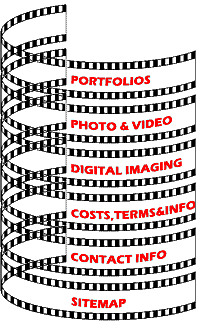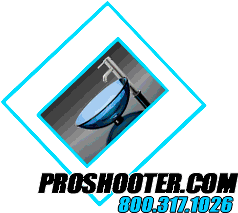|

Site Map:
Know
what
you're looking for?
Find it fast here
Proshooter.com
is John Lacy,
a commercial photographer
based in the
metro Detroit area.
We produce high quality photography
mostly for business to business marketing.
Our principal markets are the construction industry and the automotive
manufacturing industry. A significant portion of our work is also divided
among the hospitality industry (hotels, resorts, casinos & restaurants)
Our specialties include
>>
Architectural
(interior & exteriors),
>>
Automotive
(interiors & exteriors,
studio & location),
>>
Industrial,
shooting manufacturing facilities & equipment.
>> Environmental & Studio
Executive Portraiture
for Editorial, Annual Report
and similar,
>>
Studio Product
including electronics,
glass, plastic, package goods & food.
In addition to photography we also offer
>> Digital Retouching
>> Large Format Printing
>>Graphic Design & Offset Printing for brochures, catalogs and promotional
materials and
>>
Website Design & Hosting.
We've been in business since 1987
|
We
recently have been getting questions about why we assume that the images we
shoot will have to be "cleaned up" in post production. What does it mean to
"clean up" an image and why is it a benefit? And what is post production
anyway? Does it cost extra? Here are the answers;
When we shoot a job we make decisions during the shoot as to what is easier
or more practical to correct in each composition during the shoot or after
the shoot in post production. This allows us to shoot more images during the
shoot, knowing what can be more effectively and efficiently addressed in
"post". Some examples of items assumed to be reviewed and corrected in
either basic or extensive post production include removing unwanted items in
the shot including marks, reflections, imperfections and objects that are
simply impractical to try to address during the shoot. This may include
anything from an unwanted zit on a subjects face to a stain on a wall or
floor to a car parked on a street near a building we are shooting.
Our current standard setup is a 16.9 Mega-Pixel Digital System shooting RAW
files. At your preference we also offer digital up to 39 Mega-Pixel or
Medium and/or Large format conventional film. These options are available,
but at additional expense.
Digital Post Production
What's included in the shoot price:
We download files from camera cards and archive the original RAW files
(these are like digital negatives, so we can always go back to where we
started if ever needed). I then process the RAW files through a post
production software package (DxO Optics Pro
Elite) that corrects chromatic aberrations
and curvature distortion specific to each
lens I used resulting in a "DxO RAW" file.
This file is also archived. Here is a link to see examples of how this
process improves images shot with even an $8000 camera and a $2000 lens as I
use;
click here to learn more about DxO
The DxO RAW files are then further processed to adjust color balance,
contrast, saturation and sharpness. Some slight cropping of the images may
also take place at this step. This results in a full size 8 or 16 bit TIFF
file. This file is archived.
I then produce a webpage with small and
medium sized versions of the files saved as a Jpeg
format for client review. The images at this point are
useable but could be worked further to make
them optimal.
Retouching
that's additional to the shoot cost: "Cleaned Up to Perfection";
This is applied only to selected shots as it can
incur significant additional time and cost. This additional
retouching is recommended but not required and can be performed by your own
agent if desired. We have over 10 years experience using Adobe Photoshop
(thatís now in excess of 12,000 hours in total). This process results
in the highest quality version of each image and provides maximum
versatility in its use in your marketing and other applications. My goal in
this retouching is to produce images which represent the subject in its
perfection. None of the applied retouching should draw attention to itself,
only the subject should be the focus of the shot.
Each selected image is examined and evaluated
closely. Small artifacts that may be the result of dust on the sensor are
removed. Using the clone and heal brush small marks on walls, floors,
ceilings, furniture, sky, pavement, etc. are
also removed. The overall perspective which may result from shooting a wide
angle lens that needs to point slightly up or down is corrected.
Areas of the image which may be slightly too light or too dark are balanced
by selecting those areas and making adjustments to each area separately.
Fine adjustment to color balance, contrast, saturation and sharpness are
also made. In many cases this may be to only the portions of the image that
require it rather than applied to the whole image. Reflections may also be
removed or softened.
On interiors; electrical outlets or sprinkler heads may be removed. On
exteriors; the sky may be made more blue or replaced entirely. Grass is made
to be all green without brown spots, pavements are smoothed and perhaps
darkened. And all of this should look natural and unworked.
All of the above may take between 5 and 45 minutes per image with the
average time typically being about 10-15 minutes per image. At $90/hr
this is only $15-25, that's about equal to the cost of an 8x10 print. The
resulting file is of course archived.
Because the full size file (5,000-10,000 pixels wide) is
impractically large for 90% of likely
applications a slightly smaller version is made (1500-3000px) and saved as
both a TIFF and a high quality JPeg for
delivery to the client on CD,
DVD or transfer via the Web. Note that a
3000px file can be published in high quality as large a full page ad or
magazine cover.
Retouching
above and beyond the "clean-up"; Creating What Was Never There.
Here is a link to some examples of retouching that may take an hour or more
per image, but I'm sure you'll agree that the results are dramatic; Amazing
Samples
In some cases circumstances do not allow waiting until the ideal day or
weather. Other examples include the removal of cars from parking lots, the
addition or removal of people in shots, the addition of wall decorations,
removal of signage, the moving of furniture, or the replacement of floor
covering just to name a few. Sometimes we may combine 2 or more images into
a single composition.
Please note that I mention several times above that we archive image files
from shoots several times throughout this process. Our current workflow
process as of July 2006 is to transfer all original and work files to DVD
and store those DVD discs in fireproof file cabinets at our principle place
of business. As a liability issue I must state that we will not be held
responsible for any file that we produce or any version of any file we
produce becoming lost or corrupted in our archives and that image files may
not be accessible to clients more than 90 days after any shoot.
©2006 John Lacy,
Proshooter.com a dba of Real Smart Marketing LLC, a Michigan Limited
Liability Company
Example projects:
before you look at these examples please
remember that by seeing the "before" the "after" may appear differently than
if had never seen the "before". While these are carefully done in super high
resolution, these typically require only 1-3 hours each to retouch. In some
cases as little as 15minutes. This process adds value to our work for our
clients.
Architectural Projects Exteriors - Before & After
Modular Construction Projects
Industrial Projects - Before & After
coming soon
Portraits - Before & After
coming soon
We currently use 5 computers, including a powerful laptop capable
of editing video on location. Our main editing system for both digital
video and retouching photos is a dual processor unit with 6Gb of RAM. This
computer also features several hard drive RAIDs, which
means they act as a single huge, superfast drive. Each of these RAIDs is
1Tb (1000Gb) This system allows for
maximum creativity and efficiency.
The digital prints we produce are indistinguishable from conventional
photographic prints. They are not really good inkjet prints. They are
printed by laser on photographic stock. To learn more about our output
options click here.

|
|

